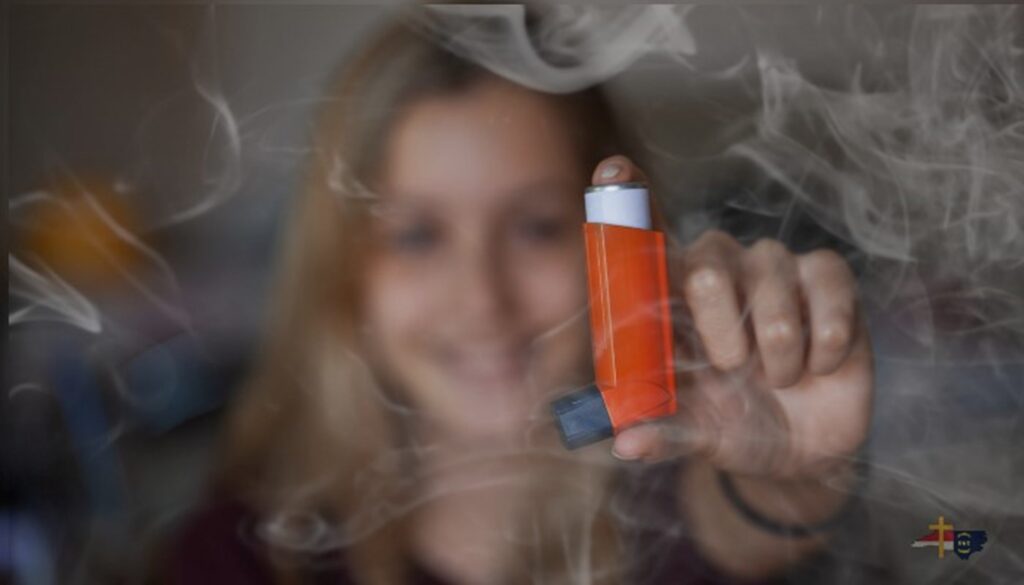
By Peyton Majors
Christian Action League
February 15, 2024
A new study that shows increased asthma rates among high school students who use marijuana should impact the debate over its legalization, says Rev. Mark Creech, executive director of the Christian Action League, who has monitored the nationwide cannabis debate.
The study, published in the journal Pediatric Pulmonology and conducted by researchers at the Columbia University Mailman School of Public Health and the City University of New York, found that asthma is more common “among high school students who use cannabis, relative to those who do not” and that the “prevalence of asthma increases with the frequency of its use among the students,” according to a summary of the study released by the researchers.
The study was based on the 2019 Youth Risk Behavior Surveillance System, a national high school survey. The study was titled, “Asthma prevalence among US 9th–12th graders who report past 30‐day cannabis use in 2019.”
Researchers said in a statement the study “adds to the growing body of evidence linking cannabis use to adverse health outcomes among young people.”
“The findings of this study have important implications for public health, education, and drug prevention programs targeting high school students although more public health and clinical research is needed,” said Renee Goodwin of the Department of Epidemiology at Columbia Public Health. “Scientific data that can inform clinical guidelines and public health policy, as well as parents and youth, on the potential relationship between cannabis use and respiratory health among youth, is critical and we urge that more studies like this one be a priority.”
Marijuana is legal for medicinal use in 38 states and for recreational use in 24 states, according to the National Conference of State Legislators.
A bill that would have legalized medicinal marijuana in North Carolina passed the state Senate last year but failed to get a hearing in the House.
States with medical marijuana laws “show higher average use by adolescents, and lower perceptions of risk from use, than non-medical marijuana states,” said Kevin A. Sabet, author of Reefer Sanity: Seven Great Myths About Marijuana.
“This would seem to indicate that increased marijuana use results from the ease of access that comes with medical marijuana laws,” Sabet said. “These laws contribute to community norms about drug use: ‘If pot is medicine and is sanctioned by the state, then it must be safe to use.’”
Rev. Creech, said the new study “sheds light on a concerning correlation between cannabis use and asthma prevalence among American high school students.”
“In the context of debates surrounding the legalization of medical marijuana, these findings underscore the importance of considering the potential negative health impacts, such as increased asthma prevalence, alongside any proposed benefits. Based on the information provided in the study, it can be logically argued that smoked marijuana poses more hazards than benefits, particularly concerning the prevalence of asthma among high school students.”
It is a myth, Creech added, that doctors in other states can literally “prescribe” marijuana.
“In the United States, even in states where it’s legal, doctors cannot prescribe marijuana as they would other medications listed on their DEA-authorized prescription pads. Instead, what state laws typically require are recommendation notes or letters from doctors, or a state-issued card based on such documentation. This distinction is crucial because it reflects the true nature of marijuana within the medical system. It’s not treated as a traditional medicine that can be found in pharmacies. Moreover, marijuana consumption typically involves smoking, which is not a standard method of administering medication approved by the FDA.”
Marijuana, Creech noted, lacks standardized dosing and potency.
“This leads to a competitive environment among dispensaries and growers, with some prioritizing higher THC levels in their products — all at the expense of the public’s health,” Creech said. “In essence, smoked marijuana cannot be classified as medicine in the traditional sense. It cannot be prescribed by doctors, and its absence from pharmacies underscores the fact that it operates outside the standard medical framework.
“Furthermore, despite assurances from advocates of medical marijuana regarding the implementation of regulatory measures to prevent access by children, the reality often falls short of these promises. Shockingly, in states where medicinal marijuana is legalized, approximately one-third of adolescents obtain cannabis through others’ purported ‘prescriptions.’”
